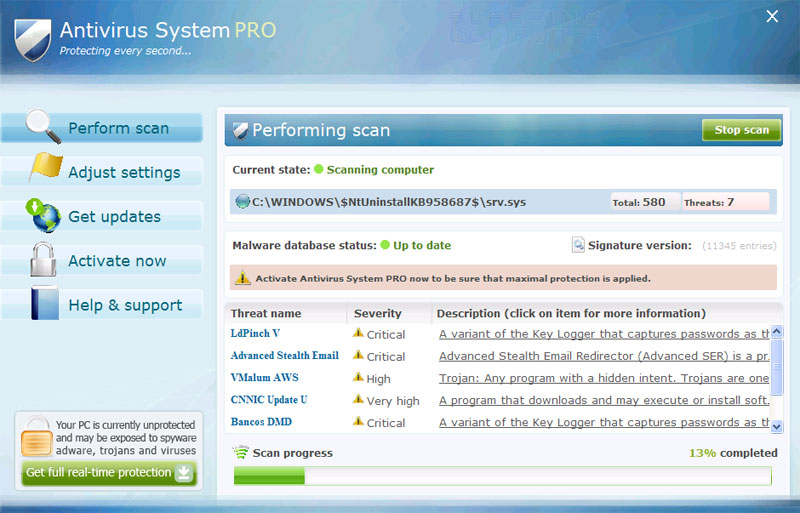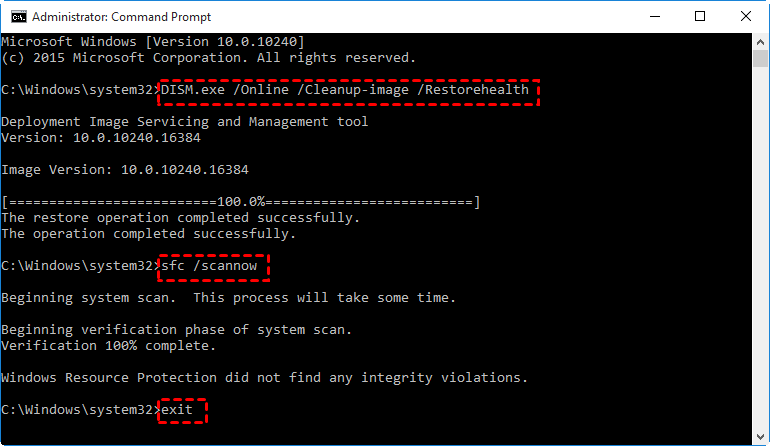Unleashing the Power to Safeguard: Eradicating the COM Surrogate Virus in Windows 8
Understanding COM Surrogate and its Implications
COM Surrogate is a system process in Windows that allows for the execution of DLL files and helps with file organization and management. However, it can sometimes be exploited by viruses and malware, causing system issues and high CPU usage.
To remove the COM Surrogate virus in Windows 8, follow these steps:
1. Open Task Manager by pressing Ctrl+Shift+Esc.
2. In Task Manager, navigate to the Processes tab.
3. Look for any suspicious processes with names like “dllhost.exe” or “COM Surrogate”.
4. Right-click on the suspicious process and select Properties.
5. In the Properties window, go to the Security tab.
6. Check the process owner under the “Group or user names” section.
7. If the owner is not recognized (e.g., “Unknown” or “Administrators”), it may be a sign of malware.
8. Go to the folder where the suspicious process is located and check for any unusual file extensions or file names.
9. If you suspect the process is malware, remove the infected files using your preferred antivirus software or Windows Defender.
By following these steps, you can effectively remove the COM Surrogate virus and protect your system from further malware infections.
Detecting and Identifying the Presence of COM Surrogate Virus
1. Open Task Manager by pressing Ctrl + Shift + Esc.
2. Look for any suspicious processes under the “Processes” tab. Specifically, check for COM Surrogate processes like “dllhost.exe” or “dllhost.exe *32”.
3. If you find any suspicious processes, right-click on them and select “Open File Location”. This will reveal the folder where the malicious file is located.
4. Check the file extensions of the suspicious files. Genuine COM Surrogate files should have the “.exe” extension. If you find any files with different extensions, they could be malware.
5. Next, check the process names and permissions of the suspicious files. Legitimate COM Surrogate processes should have the description “COM Surrogate” and should be located in the “C:WindowsSystem32” folder.
6. If you suspect that a file is infected, it is recommended to run a full system scan using a reliable antivirus program like Norton 360 or Windows Defender.
7. Once the malware is detected, follow the instructions provided by the antivirus software to remove the infected files and clean your PC.
Remember to regularly update your antivirus software and practice safe browsing habits to prevent future malware infections.
Removing COM Surrogate Virus from Your Windows 8 Device
Remove COM Surrogate Virus from Your Windows 8 Device
If you’ve encountered the COM Surrogate virus on your Windows 8 device, we’ve got you covered. Follow these steps to remove the virus and protect your computer:
1. Open Task Manager by pressing Ctrl + Shift + Esc.
2. Go to the Processes tab and look for “dllhost.exe” or “dllhost.exe *32” in the list of running processes.
3. Right-click on the suspicious process and select “End Task.”
4. Open File Explorer and navigate to the following directory: C:WindowsSystem32.
5. Look for any suspicious files with names similar to “dllhost.exe” or “COM Surrogate” and delete them.
6. Run a full system scan using a reliable antivirus software like Norton 360 to ensure your device is free from any other malware.
Remember to regularly update your antivirus software and practice safe browsing habits to prevent future infections. Stay vigilant and keep your Windows 8 device secure.
For a more detailed guide, check out our video tutorial on removing the COM Surrogate virus from your Windows 8 device.
Disabling COM Surrogate to Prevent Further Issues
To prevent further issues with the COM Surrogate virus on Windows 8, you can disable the COM Surrogate process. Follow these steps:
1. Open Task Manager by pressing Ctrl + Shift + Esc.
2. Go to the “Processes” tab.
3. Look for the “dllhost.exe” process in the list.
4. Right-click on it and select “End task”.
5. A warning message may appear, click “End process” to confirm.
6. To permanently disable COM Surrogate, open File Explorer.
7. Go to the “View” tab and click on “Options”.
8. In the “Folder Options” window, go to the “View” tab.
9. Scroll down and uncheck the option that says “Display file icon on thumbnails”.
10. Click “Apply” and then “OK” to save the changes.
By disabling COM Surrogate, you can prevent further issues and potential virus infections. It’s always important to stay vigilant and regularly scan your PC for any malware presence.
Troubleshooting COM Surrogate Crashes
1. Identify the problem: If you’re experiencing COM Surrogate crashes on Windows 8, it could be due to a virus or malware. Look for error messages indicating issues with the COM Surrogate process.
2. Remove the virus: To remove the COM Surrogate virus, follow these steps:
a. Open the Task Manager by pressing Ctrl+Shift+Esc.
b. Click on the “Processes” tab and look for “dllhost.exe” or any suspicious process names.
c. Right-click on the process and select “End task” or “End process tree”.
d. Run a trusted antivirus or malware removal tool to scan and remove any infections.
e. Restart your computer to ensure the virus has been completely removed.
3. Prevent future infections: To avoid similar issues in the future, practice good security habits such as keeping your operating system and antivirus software up to date, avoiding suspicious websites and downloads, and being cautious when opening email attachments.
Remember to always prioritize your online security and stay vigilant against potential threats.
Addressing Password Requests from COM Surrogate
If you’re encountering password requests from COM Surrogate while trying to remove the COM Surrogate Virus on Windows 8, here’s a concise guide to help you address the issue.
1. Open Task Manager by pressing Ctrl + Shift + Esc.
2. Look for the process named dllhost.exe or dllhost.exe *32.
3. Right-click on the process and select Properties.
4. Go to the Security tab and click on Edit under Group or user names.
5. Select Users from the list and check the box for Full control under Permissions for Users.
6. Click Apply and then OK to save the changes.
7. Restart your computer and the password requests should no longer appear.
By adjusting the permissions for the dllhost.exe process, you can prevent the password requests and remove the COM Surrogate Virus. Remember to scan your system with reliable antivirus software for complete malware removal.
Preventing COM Surrogate Infiltration and Malware Installation
To prevent COM Surrogate infiltration and malware installation on Windows 8, follow these steps:
1. Disable COM Surrogate: Go to the Control Panel, open “Folder Options,” and select the “View” tab. Under “Advanced settings,” uncheck the option that says “Launch folder windows in a separate process.”
2. Use a reliable antivirus software: Install and regularly update a reputable antivirus program to scan for and remove any potential malware.
3. Enable Windows Defender: Windows 8 comes with built-in protection called Windows Defender. Make sure it is turned on and running the latest updates.
4. Be cautious when opening email attachments or downloading files: Avoid opening suspicious email attachments or downloading files from untrusted sources. Always verify the sender and use caution when clicking on links.
5. Keep Windows and other software up to date: Regularly update your operating system and applications to ensure you have the latest security patches.
Remember, prevention is key. By following these steps and staying vigilant, you can minimize the risk of COM Surrogate infiltration and malware installation on your Windows 8 system.
Manual Removal of Malware Associated with COM Surrogate
To manually remove malware associated with COM Surrogate on Windows 8, follow these steps:
1. Open the Task Manager by pressing Ctrl+Shift+Esc.
2. In the Processes tab, look for any suspicious processes related to COM Surrogate. These may have names like “dllhost.exe” or “dllhost.exe *32”.
3. Right-click on the suspicious process and select “Open File Location”.
4. In the file explorer window that opens, check if the file location seems legitimate. If it looks suspicious or unfamiliar, it may be malware.
5. Close the file explorer window and go back to the Task Manager.
6. Right-click on the suspicious process again and select “End Task”.
7. Open the Control Panel and go to “Programs” or “Programs and Features”.
8. Uninstall any suspicious or unfamiliar programs that may be related to the COM Surrogate virus.
9. Restart your computer to complete the removal process.
Remember to regularly update your antivirus software and scan your system for any remaining threats.
Frequently Asked Questions about COM Surrogate and its Removal
- Check for suspicious processes in Task Manager
- Disable thumbnail preview in File Explorer
- Update or uninstall problematic software
- Perform a full system scan with antivirus software

- Run System File Checker (SFC) scan
- Perform a clean boot

- Reset Windows Explorer settings
